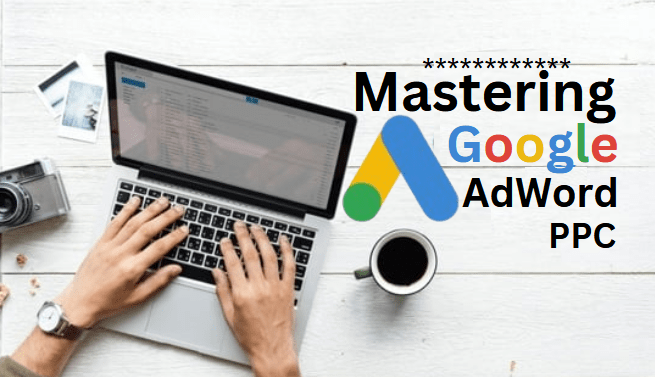Google Local Service Ads (LSAs) are a powerful tool for local businesses to connect with potential customers in their area. Please note that there may have been updates or changes to the platform since then, so it’s a good idea to check the latest documentation or resources for any new features or guidelines. I have also highlighted the 13 steps to create a LSA, and some of its key benefits to your business.
What are Google Local Service Ads (LSAs)?
Google Local Service Ads are a paid advertising platform that allows local businesses to promote their services on Google. These ads appear at the top of search results when users search for specific local services in their area. LSAs are specifically designed to connect customers with local service providers, such as plumbers, electricians, locksmiths, and other home service professionals. Here is a comprehensive guide to maximizing Google Ads Cost in Nigeria.
Best Ways to Get Leads With Google Local Service Ads
Google Local Service Ads (LSAs) can be a powerful tool for generating leads for your local business. LSAs are designed to connect local service providers with potential customers in their area. Here are some effective ways to get leads with Google Local Service Ads:
1. Optimize Your Google My Business (GMB) Profile
The first step to generating leads with Google Local Service Ads is creating a robust online presence; begin by optimizing your Google My Business profile. Follow these two steps to ensure maximum visibility:
• Complete and Accurate Information: Ensure that your GMB profile is thorough and accurate. Provide up-to-date information about your business, including contact details, business hours, and service areas.
• High-Quality Images: Boost the visual appeal of your profile by adding high-quality images of your business premises, services, and team members. This creates a more engaging and trustworthy experience for potential customers.
2. Select the Right Services
Another step to generating leads with LSA is the selection of right services. When choosing the services to highlight on your GMB profile, careful Service Selection is paramount here; choose the services you want to emphasize carefully.
Use specific and relevant keywords that potential customers are likely to search for, increasing the chances of your business appearing in relevant search results. Don’t miss reading 12 benefits of hiring a Google Ad Manager Expert for your campaigns.
3. Set up a Competitive Budget
Effectively managing your advertising budget is crucial for optimal results if you desire to generate leads with Google Local Service Ads.
• Determine a Reasonable Budget: Set a budget for your ads based on your business goals and the competitive landscape in your area. Consider factors such as industry competition and the potential return on investment.
• Monitor and Adjust: Regularly monitor the performance of your ads and adjust your budget as needed. This allows you to maximize your ad exposure and adapt to changes in the market.
4. Craft Compelling Ad Copy
In the journey to successfully generate leads with Google Local Service Ads, the content of your ads plays a pivotal role in attracting potential customers. In-fact, it is a major requirement that your content is clear and concise enough.
Write ad copy that is clear, concise, and compelling. Highlight your unique selling points and showcase what sets your business apart from the competition. This encourages potential customers to choose your services.
5. Use High-Quality Imagery
Another major step to generating leads with Google Local Service Ads is the incorporation of visually appealing elements such as eye-catching visuals to enhance the overall impact of your ads.
Include high-quality images that showcase your work, team, or the quality of your services. Visually striking content not only grabs attention but also contributes to making your ads more appealing and memorable.
6. Encourage Positive Feedback and Showcase Reviews
Encourage delighted customers to share their positive experiences by leaving reviews on your Google My Business profile. Positive feedback not only enhances your credibility but also serves as a powerful tool to attract more leads to your business. Find time to also read: top 15 key features of Google Ad Manager in 2024.
7. Optimize with Local Keywords
Enhance your ad copy by incorporating local keywords that resonate with users searching for services within your specific location. This strategic approach can significantly increase your visibility among the local audience.
8. Swiftly Respond to Inquiries
Take advantage of the messaging feature often present in Google Local Service Ads. By responding promptly to inquiries, you can elevate the chances of turning potential leads into satisfied customers. Timely communication is vital key to building trust and fostering customer conversions.
9. Monitor and Adjust for Performance
Regularly assess the performance of your Local Service Ads using the Google Ads dashboard. Dive into essential metrics such as clicks, impressions, and conversion rates. Based on the insights gained, fine-tune your strategy to optimize your campaign for superior results.
10. Leverage the Google Guarantee (if applicable)
If eligible, explore the benefits of joining the Google Guarantee program. This additional layer of trust can instill confidence in potential customers, potentially leading to increased conversions for your services.
11. Introduce Promotions or Discounts
Consider implementing promotions or discounts for customers who discover your services through Google Local Service Ads. This enticing incentive can sway potential customers in your direction, making them more likely to choose your services over competitors.
By implementing these strategies, you can significantly enhance your Google My Business presence, increasing the likelihood of attracting and converting potential customers. Watch this video tutorial explaining the of best strategies for Google Ad Word in 2024.
Remember to stay engaged with your Google Local Service Ads campaign, continually refining your approach based on performance data and customer feedback. Regularly update your GMB profile and make adjustments to your ad strategy to stay competitive in your local market.
Key Benefits of Google Local Service Ads:
1. Increased Visibility
LSAs appear prominently at the top of search results, increasing visibility for local businesses.
2. Pay-Per-Lead Pricing
Rather than paying per click or impression, businesses are charged on a per-lead basis. You only pay for leads generated through the ad.
4. Google Guarantee
Local Services Ads come with a Google Guarantee badge, assuring customers that businesses have passed background checks and are backed by Google if the service is not satisfactory.
5. Easy Booking
Customers can easily contact and book services directly through the ad, streamlining the customer acquisition process.
13 Steps to Create a Google Local Service Ads:
Listed below are 13 tested and proven steps to creating a Google Local Service Ads that generate leads and increase sales.
1. Eligibility
In attempt to create a Google Local Service Ads, the first step is to check if your business and services are eligible for LSAs in your area. Ensure your business passes the required background checks.
2. Create a Google Ads Account
If you don’t already have a Google Ads account, you’ll need to create one. Visit the Google Ads website and follow the instructions to set up your account.
3. Verify Your Business
Before setting up Local Services Ads, ensure that your business is verified on Google My Business. Verification helps establish the legitimacy of your business.
4. Enable Local Services Ads
• Log in to your Google Ads account.
• In the left-hand navigation menu, click on “Local Services.”
• Follow the prompts to enable Local Services Ads for your business.
5. Set up Your Profile
Fill in your business details, including your business name, hours of operation, service areas, and other relevant information.
6. Select Your Services
Specify the services you offer. This is crucial as Google will match your business with users searching for those services.
7. Set Your Budget
Determine your advertising budget. Google Local Service Ads typically operate on a pay-per-lead basis, so you’ll be charged when a potential customer contacts you through the ad.
8. Verify Your License and Insurance
Depending on your industry, Google may require you to provide proof of your license and insurance. This step is essential for the verification process.
9. Background Check
In some industries, Google may conduct background checks on your employees. Ensure that your team members are aware of this process.
10. Manage Your Ads
Once your Local Services Ads are live, regularly monitor and manage your campaigns. This includes reviewing performance metrics, adjusting your budget, and making any necessary updates to your business details.
11. Respond to Customer Inquiries
Promptly respond to customer inquiries through the Local Services platform. Quick responses can positively impact your ad performance.
12. Collect and Manage Reviews
Encourage satisfied customers to leave reviews on your Google My Business profile. Positive reviews can improve your visibility and reputation.
13. Optimize Your Campaign
Regularly analyze the performance of your Local Services Ads and make adjustments as needed. This may include tweaking your budget, refining your service offerings, or updating your business information.
How To Get Leads With Google Local Service Ads (Google Guaranteed):
Remember that the steps and features may evolve over time, so always refer to the latest documentation and guidelines provided by Google for the most accurate information.




